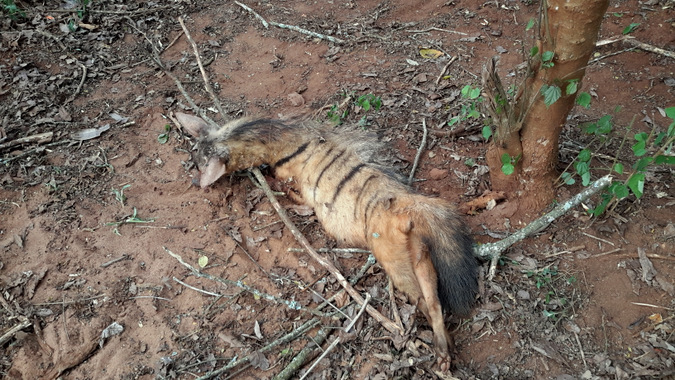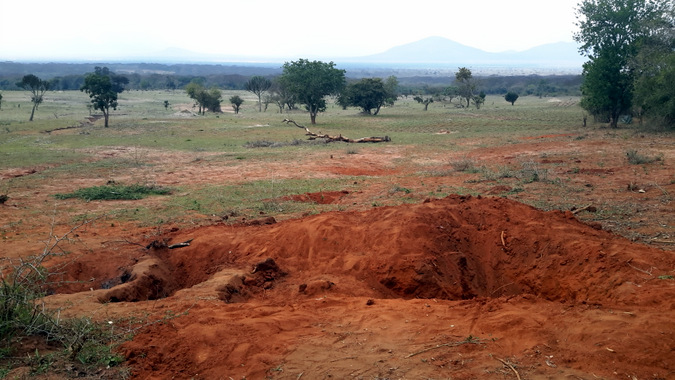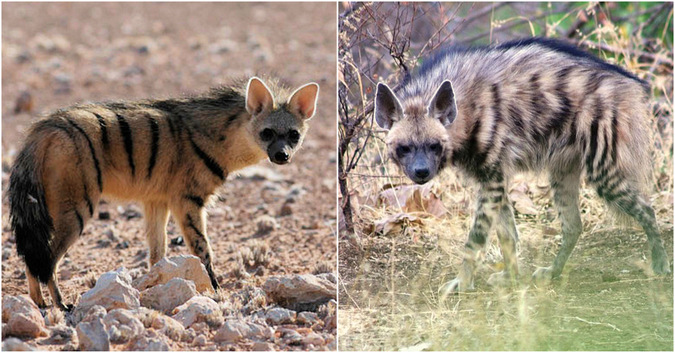
Comment from the editors: For the Maasai people, cattle are considered extremely valuable and form an intrinsic part of their daily lives. Their cattle are at the centre of everything, providing them with food and materials, as well as playing an important role in their rituals and representing their wealth and status. For those of us living in urban areas, it is important to understand the Maasai culture, where the need to protect and care for their cattle is paramount. Stephanie, who is married to a Maasai warrior, recently shared with us her own unique insight and thoughts about how the Maasai protect their cattle. In this post she tells us about the problems these rural farmers face with predators that kill their cattle:

Written by Stephanie Fuchs
I have lived with the Maasai now for six years and have in that time witnessed several incidents of human-animal conflict.
Most of the time it is lone hyenas that break into the goat pen at night and kill and injure at random. They did so at our boma in January 2016 – two sheep were half-eaten and two others injured so badly that we had to put them out of their misery. A third sheep got away with just a bitten tail.
On another occasion, we had a leopard kill livestock, and just recently what is believed to be wild dogs attacked several goats while they were out browsing in the afternoon. And on the morning of November 19th, 2017, my husband woke me with news of two calves having been eaten by hyenas the night before at our local waterhole.
I am recounting here what I have gathered happened on that evening, after questioning my husband and other Maasai and after visiting the site.
I was told that two hyenas killed two calves that were separated from their herd while out grazing in the afternoon. A farmer who lives close to the waterhole heard the cattle scream and alerted a Maasai warrior by phone about the attack by what he thought to be hyenas. Two warriors came running, but by the time they got to the scene, the calves were dead. They heard two hyenas calling from a distance and what they believed to be a third hyena that took flight as they approached. When they gave chase, the animal fled into a nearby burrow.
The Maasai warriors, being fiercely protective of their cattle and not willing to let what they thought had killed their livelihood go unharmed, started digging up the burrow. They dug until the early hours of the morning and eventually, the animal (thought to be a hyena) fled from the safety of the burrow – and was unfortunately killed.

On being shown the scene and dead animal, I confirmed that the warriors had not killed a hyena, but an aardwolf.
To the untrained eye aardwolfs and hyenas may look similar, and yet aardwolfs are insectivorous and not capable of killing cattle – they don’t have the right jaw structure for the job. The regrettable truth is that this aardwolf was killed for a crime it did not commit.
This unfortunate incident shines a light on the fact that rural communities living amongst wildlife require wildlife education. The Maasai frequently encounter wildlife while herding their livestock and have in this way attained a traditional knowledge about it. An animal like the aardwolf, however, shy and nocturnal as it is, will not have often crossed paths with them, and if it did, it would have been mistaken – as in this incident – for a striped hyena. They have no means of knowing that an animal so similar in looks to one that frequently kills their livestock, only eats termites.
The world of the Maasai is changing at an alarming rate and with this they have come to understand that there is a need to adapt. Some of their traditions are these days left behind, yet others are harder to let go of. From my observations, I gather that there is confusion over what to hold on to and what to let go.
Retaliation for the loss of a goat or cow is ingrained in their culture – and yet I believe that their attitude towards wildlife is changing. They see that wildlife has become rare, as have attacks on their animals, and they are now shifting towards wanting to protect what is left.
I try whenever I can to influence them towards taking better care of their land and all living things within it. This is why I have created a campaign where I aim to educate a Maasai community in Tanzania about conservation and land management to inspire them to look after their land. By doing so, I hope to help them preserve their culture and the wilderness they live in.
To achieve these goals, I would like for four Maasai from our village (two chosen by me and two by the village) and myself to be trained in land management and sustainable grazing at the Mara Training Centre in Kenya. Any donation to our campaign will help us to get one step closer to achieve this goal.

To comment on this story: Login (or sign up) to our app here - it's a troll-free safe place 🙂.![]()






